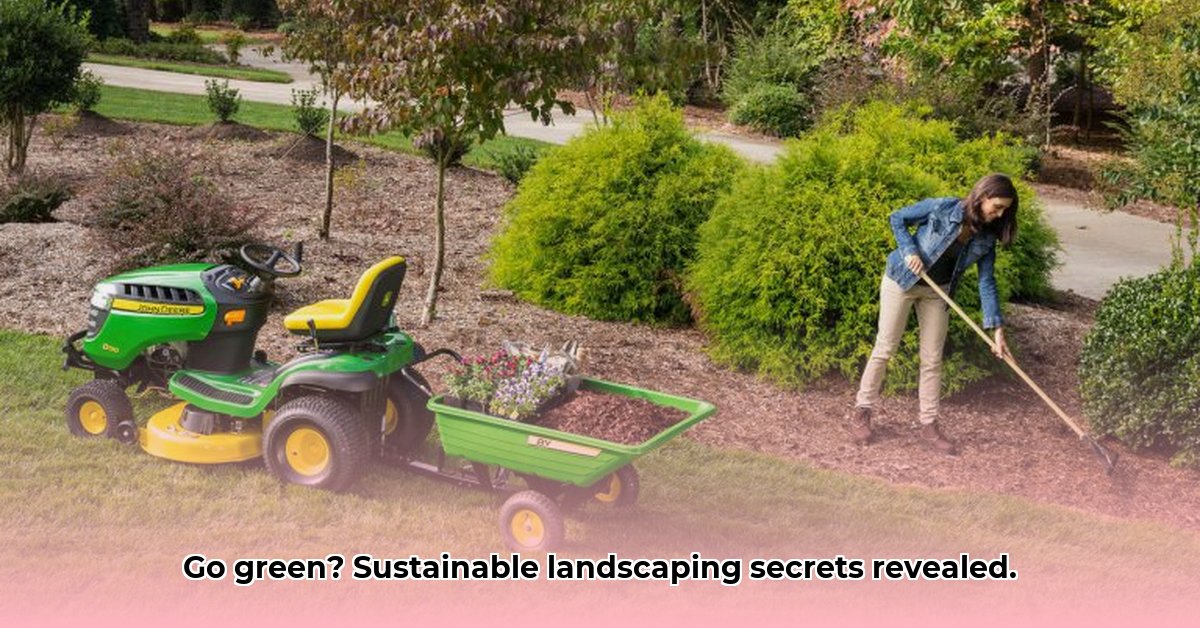
Garden State Lawn & Tractor (GSLT) enjoys a stellar reputation for customer satisfaction. But in today's evolving landscape, embracing sustainable practices isn't just good for the planet—it's a powerful strategy for business growth. This guide provides a step-by-step plan to help GSLT leverage the growing demand for eco-friendly landscaping services, transforming its operations while enhancing its brand image and profitability. For additional equipment options, check out this link to attachments.
Garden State Lawn & Tractor: Cultivating a Sustainable Future
The world is changing, and so are consumer preferences. More and more, customers value businesses that align with their environmental concerns. This presents a significant opportunity for GSLT to not only increase its market share but also position itself as a leader in sustainable landscaping. By adopting environmentally responsible practices, GSLT can attract eco-conscious customers willing to pay a premium for services that minimize environmental impact. Imagine the positive impact—and the positive PR—this would generate!
Assessing GSLT's Current Position: A Foundation for Growth
While GSLT's commitment to customer satisfaction is commendable, publicly available information on its sustainability practices is limited. This lack of information presents a unique opportunity. By proactively assessing and reporting on current practices, GSLT can establish a transparent and responsible image, demonstrating a commitment to environmental stewardship. A comprehensive review of fertilizer and pesticide usage, water consumption, and waste disposal will provide a baseline for future improvements and demonstrate a commitment to continuous improvement.
A Step-by-Step Guide to Sustainable Landscaping: Actionable Steps for GSLT
This actionable guide is designed to help GSLT transition to sustainable practices in three phases:
Phase 1: Quick Wins (0-6 Months): Early Successes
Customer Feedback First: Conduct a brief customer survey (e.g., via email or short online questionnaire) to gauge interest in organic lawn care and water conservation. This direct feedback will inform your initial strategy. Efficacy Metric: 90% response rate target within 3 weeks.
Eco-Friendly Product Selection: Research and source environmentally preferable fertilizers and pesticides. Look for organic certifications or products with minimal environmental impact. Actionable Item: Begin sourcing products within the first month.
Team Training and Empowerment: Invest in training for your landscaping team, focusing on sustainable practices. Consider workshops, online courses, or brief, targeted training sessions. Efficacy Metric: All team members trained within 6 months.
Phase 2: Investing in a Sustainable Future (6-12 Months): Building Momentum
Equipment Upgrades: Explore fuel-efficient or electric equipment. Consider leasing or financing options to manage costs effectively. Actionable Item: Develop a 3-year equipment replacement plan within 9 months.
Waste Reduction Implementation: Implement a comprehensive waste reduction and recycling plan. This could involve partnering with local recycling facilities. Efficacy Metric: 50% reduction in landfill waste within the year.
Water Conservation Strategies: Introduce efficient irrigation techniques. This might include smart irrigation systems, water-wise mowing practices, or the use of drought-tolerant plant species where appropriate. Actionable Item: Implement at least one water-saving measure within the first 6 months.
Phase 3: Long-Term Vision (12+ Months): Sustained Growth
Developing a Formal Sustainability Plan: Create a detailed sustainability plan with measurable goals (e.g., reducing fuel consumption by X% annually, increasing organic fertilizer use by Y%). Regularly evaluate and update the plan. Actionable Item: Finalize the sustainability plan by 12 months.
Community Engagement: Partner with local schools, organizations, or community groups to promote environmental awareness. This can enhance your brand image and solidify your commitment to the community. Actionable Item: Initiate at least one community partnership within the year.
Sustainability Certification: Explore industry certifications (e.g., Green Business Certification). These certifications demonstrate your commitment to sustainable practices and can attract eco-conscious clients. Actionable Item: Research appropriate certifications within 6 months.
Addressing Potential Challenges: Proactive Mitigation
The transition to sustainable landscaping may present challenges:
| Challenge | Mitigation Strategy |
|---|---|
| Higher upfront costs | Emphasize long-term cost savings through reduced resource consumption, explore government incentives & grants. |
| Staff training time & costs | Employ phased training, utilize online resources, and schedule training during off-peak operational periods. |
| Potential initial price increase resistance from customers | Highlight premium quality, long-term value, and the positive environmental impact of sustainable services. |
GSLT's Sustainable Future: A Vision for Growth and Positive Impact
Embracing sustainability isn't just about reducing environmental impact; it's about building a more resilient and profitable business. By showcasing its commitment to environmental stewardship, GSLT can attract a loyal, environmentally conscious customer base, gain a competitive advantage, and ultimately achieve sustainable growth. The future of GSLT is green. Let's make it happen.